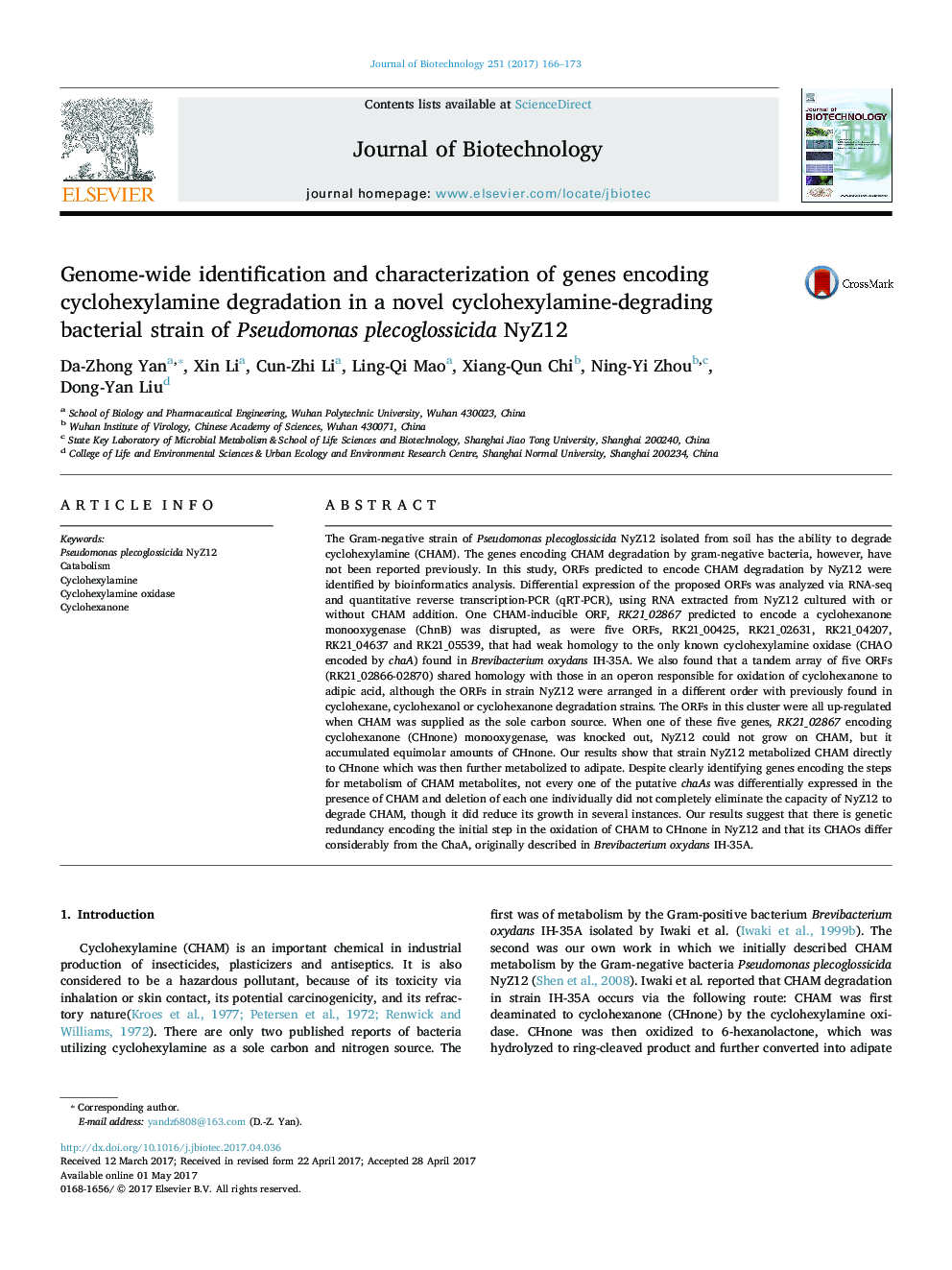| Article ID | Journal | Published Year | Pages | File Type |
|---|---|---|---|---|
| 6452068 | Journal of Biotechnology | 2017 | 8 Pages |
â¢Characterizing the genes encoding cyclohexylamine degradation in P. plecoglossicida NyZ12.â¢The conversion of cyclohexanone to adipic acid is the only pathway for the metabolism of cyclohexylamine in P. plecoglossicida NyZ12.â¢There is a genetic redundancy in the initial step of catalyzing cyclohexylamine into cyclohexanone in strain NyZ12.â¢The MAO responsible for CHAM oxidation to Chnone in NyZ12 is much different from the reported one of chaA from B. oxydans IH-35A.â¢We have set up a marker-free gene knockout method for eliminating the polarity effect on the growth of strain NyZ12.
The Gram-negative strain of Pseudomonas plecoglossicida NyZ12 isolated from soil has the ability to degrade cyclohexylamine (CHAM). The genes encoding CHAM degradation by gram-negative bacteria, however, have not been reported previously. In this study, ORFs predicted to encode CHAM degradation by NyZ12 were identified by bioinformatics analysis. Differential expression of the proposed ORFs was analyzed via RNA-seq and quantitative reverse transcription-PCR (qRT-PCR), using RNA extracted from NyZ12 cultured with or without CHAM addition. One CHAM-inducible ORF, RK21_02867 predicted to encode a cyclohexanone monooxygenase (ChnB) was disrupted, as were five ORFs, RK21_00425, RK21_02631, RK21_04207, RK21_04637 and RK21_05539, that had weak homology to the only known cyclohexylamine oxidase (CHAO encoded by chaA) found in Brevibacterium oxydans IH-35A. We also found that a tandem array of five ORFs (RK21_02866-02870) shared homology with those in an operon responsible for oxidation of cyclohexanone to adipic acid, although the ORFs in strain NyZ12 were arranged in a different order with previously found in cyclohexane, cyclohexanol or cyclohexanone degradation strains. The ORFs in this cluster were all up-regulated when CHAM was supplied as the sole carbon source. When one of these five genes, RK21_02867 encoding cyclohexanone (CHnone) monooxygenase, was knocked out, NyZ12 could not grow on CHAM, but it accumulated equimolar amounts of CHnone. Our results show that strain NyZ12 metabolized CHAM directly to CHnone which was then further metabolized to adipate. Despite clearly identifying genes encoding the steps for metabolism of CHAM metabolites, not every one of the putative chaAs was differentially expressed in the presence of CHAM and deletion of each one individually did not completely eliminate the capacity of NyZ12 to degrade CHAM, though it did reduce its growth in several instances. Our results suggest that there is genetic redundancy encoding the initial step in the oxidation of CHAM to CHnone in NyZ12 and that its CHAOs differ considerably from the ChaA, originally described in Brevibacterium oxydans IH-35A.
